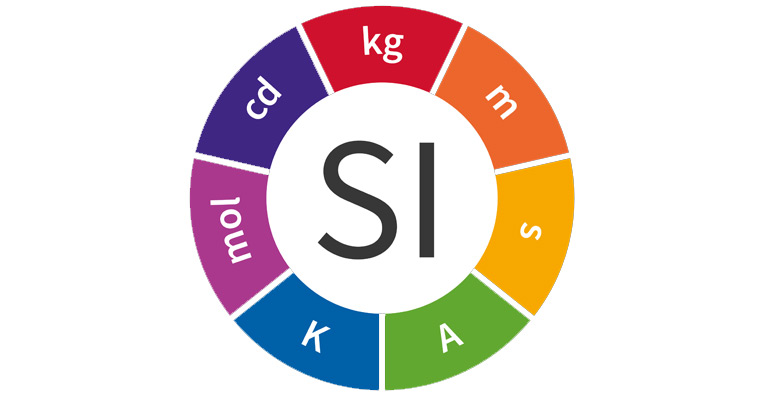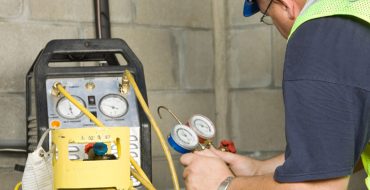Imagine we just finished the calibration of a resistor and the result of our measurement was 10.01 kΩ. Are we sure that this is the true value of the resistor? The answer is simple: No! We can never be 100% confident that we measured the true value. The true value could only be obtained by a perfect measurement, but such a measurement cannot exist. A doubt about our measurement result will always be there and this is the Uncertainty of Measurement.
According to GUM (Guide to the Expression of Uncertainty of Measurement) and VIM (International Vocabulary of Metrology) the Uncertainty of Measurement is a parameter, associated with the result of a measurement, that characterizes the dispersion of the values that could reasonably be attributed to the measurand.
Another definition of uncertainty could be: Measurement uncertainty is a range of values, usually centered on the measurement value, which contains the true value with a stated probability.
The term uncertainty is always followed by two more terms:
Confidence Interval: It is the range of values which corresponds with the stated uncertainty. “Confidence interval” is a technical term with a precise statistical meaning. It always applies to the mean of several measurements (or equivalent statistical measure) and never to an individual measurement result.
Confidence level: this is the probability associated with the confidence interval. We would say, “The true value can be expected to lie within +/-X units of the measured value with 95% confidence.” This means that we have evidence which leads us to believe that if the same measurement were to be performed many times, we would find the true value to be in this interval 95% of the time, which is the same as saying the probability of the true value being in the interval is 95%.
The uncertainty of the result of a measurement reflects the lack of exact knowledge of the value of the measurand. The result of a measurement after the correction for recognized systematic effects is still only an estimate of the true value of the measurand because of the uncertainty arising from random effects and from imperfect correction of the result for systematic errors.
In practice, there are many possible sources of uncertainty in a measurement, including:
- incomplete definition of the measurand
- imperfect realization of the definition of the measurand
- nonrepresentative sampling – the sample measured may not represent the defined measurand
- inadequate knowledge of the effects of environmental conditions of the measurement or imperfect measurement of environmental conditions
- personal bias in reading analogue instruments
- finite instrument resolution
- inexact values of measurement standards and reference materials
- inexact values of constants and other parameters obtained from external sources and used in the data-reduction algorithm
- approximations and assumptions incorporated in the measurement method and procedure
- variations in repeated observations of the measurand under apparently identical conditions
The ISO Guide to the Expression of Uncertainty in Measurement redefines uncertainty as the equivalent of a standard deviation and recommends that uncertainties be placed in two categories, “A” and “B”, based on the method by which they are evaluated. Uncertainties evaluated by method “A” are those that are based on a statistical evaluation of a series of measurements. Uncertainties evaluated by method “B” are those that are evaluated by any other method than a statistical evaluation of a series of measurements.
Having defined the term Uncertainty of Measurement, we can see below how we are able to evaluate it.
Suppose that Y is the true value of our measurand. Y, which is also stated as the output quantity, depends upon a number of input quantities Xi (i=1, 2, …, N) according to the following formula:
Y = f (X1, X2, …, XN)
[math]Y=f(X_1, X_2, X_N)[/math]
The model function f represents the procedure of measurement and the method of evaluation. It describes how values of the output quantity Y are obtained from values of the input quantities Xi.
As indicated above, we can never know the true value of the measurand or the true value of the input quantities. We can only have an estimate of them. If we suppose that y is the estimate of the value Y and xi are the estimates of the values of Xi, then the above formula becomes:
y = f (x1, x2, …, xN)
[math]y=f(x_1, x_2, x_N)[/math]
The standard uncertainty of measurement associated with the output estimate y, is represented as u(y) and it is determined from the input estimates xi and their associated standard uncertainties u(xi).
Evaluation of Uncertainty of Measurement of input estimates
The uncertainty of measurement of an input quantity can be classified either as “Type A” or as “Type B”.
Type A uncertainties usually result from several independent observations of one of the input quantities, under the same conditions of measurement.
Suppose that we perform n statistically independent observations of the input quantity Xi and each time the individual observed value is qj (j=1, 2, …, n). The estimate result would be the arithmetic mean or average [math]\small \bar q[/math]:
[math]\bar q=\frac{1}{n}\sum_{j=1}^n qj[/math]
The uncertainty of measurement associated with the estimate [math]\small \bar q[/math] can be evaluated as follows:
The experimental variance s2(q) of the values qj is given by:
[math]s^2(q)=\frac{1}{n-1} \sum_{j=1}^n(qj-\bar q)^2[/math]
The experimental variance of the mean s2([math]\small \bar q[/math]) is:
[math]s^2(\bar q)=\frac{s^2(q)}{n}[/math]
The standard uncertainty [math]\small u(\bar q)[/math] of the input estimate [math]\bar q[/math] is the experimental standard deviation of the mean which is the positive square root of the experimental variance of the mean:
[math]u(\bar q)=s(\bar q)[/math]
Type B uncertainties are usually evaluated by using any scientific knowledge we have regarding our input quantities. Such knowledge may come from:
– previous measurement data
– experience or knowledge of the behavior and properties of standard instruments
– manufacturer’s specifications
– data provided in calibration certificate
– uncertainties assigned to reference data taken from handbooks
In order to determine the type B uncertainties, we usually use probability distributions. Below are some examples of the most common probability distributions used:
Rectangular distribution: It is used when only the upper and lower limits of the input quantity xi are known (i.e. manufacturer’s specifications, resolution, a temperature range, etc). The true value may be anywhere inside these limits. If we assume that the upper and lower limit are equal to a then the standard uncertainty would be:
[math]u(x_i)=\frac{a}{\sqrt 3}[/math]
U-shaped distribution: In this case, again the upper and lower limits (a) are known, but it is more likely that the true value lies near the limits. The standard uncertainty is:
[math]u(x_i)=\frac{a}{\sqrt 2}[/math]
Triangular distribution: Unlike the U-shape, in this case (upper limit = lower limit = a) the true value is expected to be near the center. The standard uncertainty in this case is:
[math]u(x_i)=\frac{a}{\sqrt 6}[/math]
Normal distribution: The uncertainty of a calibration certificate is stated as an expanded uncertainty U with a coverage factor k. The standard uncertainty would then be:
[math]u(x_i)=\frac{U}{k}[/math]
Having analyzed the evaluation of the Uncertainty of Measurement of the input quantities, we can now proceed and describe how the Standard Uncertainty of our output estimate is calculated.
The standard uncertainty u(y) of our measurement result (or output estimate) y is given by:
[math]u(y)=\sqrt{\sum_{i=1}^N ui^2(y)}(1)[/math]
The term ui(y) is the contribution to the standard uncertainty associated with the output estimate y resulting from the standard uncertainty associated with the input estimate xi:
[math]u_i(y) = c_iu(x_i)[/math]
Where ci is the sensitivity coefficient and describes the extent to which the output estimate y is influenced by variations of the input quantity xi. It can be evaluated from the model function f by using the partial derivative formula:
[math]c_i=\frac {\partial f}{\partial x_i}[/math]
If we apply the last two formulas to the measurement result standard uncertainty formula (1) we can have the final equation for the calculation of our measurement uncertainty u(y):
[math]u(y)=\sqrt{\sum_{i=1}^N c^2 i-u^2(xi)}[/math]
A simple and common way to implement all the aforementioned (input quantities, standard uncertainties, sensitivity coefficients and uncertainty contributions) and perform our measurement uncertainty analysis is to use a table like the one shown below:
| Quantity Xi | Estimate xi | Standard Uncertainty u(xi) | Sensitivity coefficient ci | Contribution to the standard uncertainty ui(y) |
| X1 | x1 | u(x1) | c1 | u1(y) |
| X2 | x2 | u(x2) | c2 | u2(y) |
| : | : | : | : | : |
| XN | xN | u(xN) | cN | uN(y) |
| Y | y | u(y) |
So, we have done all calculation and we estimated the standard uncertainty of our result! Are we done now?
No! We have to calculate the Expanded Uncertainty of Measurement.
The Expanded Uncertainty of Measurement U, is obtained by multiplying our standard uncertainty u(y) by a coverage factor k:
[math]U = k×u(y)[/math]
When a normal (Gaussian) distribution can be assumed for the measurand, the standard coverage factor k=2 is applied. Then the assigned expanded uncertainty corresponds to a coverage probability of approximately 95%.
Now we can state in the calibration certificate the result of our measurement y and the associated expanded uncertainty U:
y ± U
We must add the following explanatory note, in order to give to the customer/user all the necessary information on how to use this uncertainty:
“The reported expanded uncertainty of measurement is stated as the standard uncertainty of measurement multiplied by the coverage factor k=2, which for a normal distribution corresponds to a coverage probability of approximately 95%. The standard uncertainty of measurement has been determined in accordance with…”
(in the end we must state the guide which we used to perform our evaluation, i.e. EA-04/02, or GUM)
And what does our statement mean? It simply means that we estimated our measurement result to have a value y, and we can be 95% certain that the true value Y would be inside the values y-U to y+U.
Written by Sofia
Opinions
Comments are closed.









Permalink
Permalink
Permalink
Permalink
Permalink
Permalink
Permalink
Permalink
Permalink
Permalink
Permalink
Permalink
Permalink
Permalink
Permalink
Permalink
Permalink
Permalink
Permalink
Permalink
Permalink
Permalink
Permalink
Permalink
Permalink
Permalink
Permalink